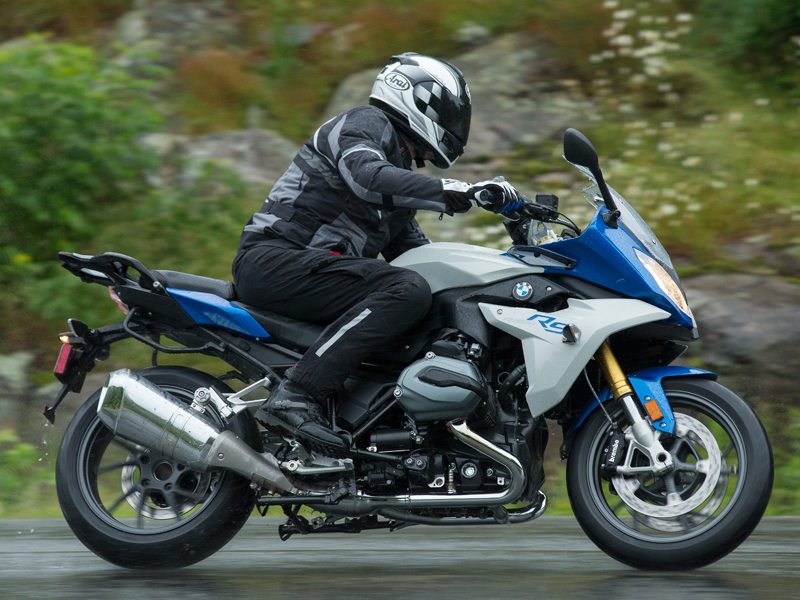
Photography by Kevin Wing
Rider, like many motorcycle magazines, is based in Southern California, where mild temperatures allow year-round riding and a short winter rainy season means precipitation is rare for most of the year. And that’s before factoring in the severe drought that has gripped the West Coast for the past few years. Getting caught in a downpour is about as likely as seeing a unicorn.
Which is why riding 240 miles on the 2016 BMW R 1200 RS in cold, steady rain was a blessing rather than a curse. Finally, an opportunity to test a bike in less-than-ideal conditions! How would BMW’s latest sport tourer fare on wet, unfamiliar roads? Would my Spidi H2Out jacket and pants keep me dry?
Very well and yes, I’m happy to report.
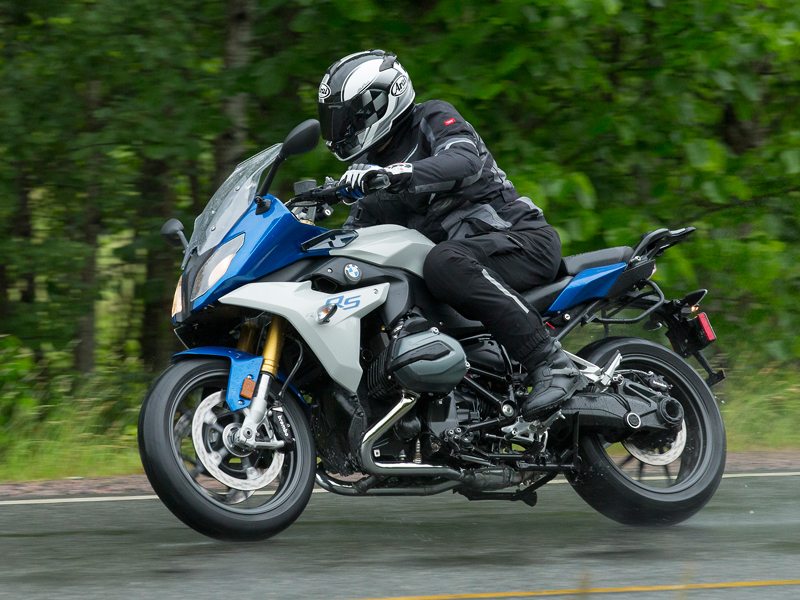
Twenty-sixteen is a comeback year for the RS. Four decades ago, the R100RS became the first mass-produced motorcycle with a frame-mounted fairing developed in a wind tunnel. The RS (Reisesport in German, “Travel Sport” in English) served as BMW’s de facto sport tourer until the R-series boxers graduated from 1150cc to 1200cc in the mid-2000s and the RS got left behind. Returning after a long hiatus, the new R 1200 RS shares much in common with the updated-for-2015 R 1200 R roadster, including the “water boxer” opposed flat twin with a central radiator, a modified airbox, reshaped air intake snorkels and a 2-into-1 exhaust with an upswept muffler. To accommodate the radiator, an upside-down telescopic fork replaces BMW’s trademark Telelever. The R and RS also have a slightly lower final drive ratio (2.818:1 vs. 2.91:1) on the single-sided cardan shaft drive than their R 1200 GS, GSA and RT counterparts.
Read our 2015 BMW R 1200 R road test
Departing from the naked R 1200 R in the interest of touring, the RS carries a sleek fairing with a two-position, manually adjustable windscreen (grab it with two hands and pull up or push down). The fairing’s pointed nose and asymmetric headlights share a family resemblance with BMW’s S 1000 RR sportbike and new-for-2016 S 1000 XR “adventure sport” tourer. Most technical specifications are the same for the RS and the R, but the RS has a slightly longer wheelbase (60.2 inches vs. 59.7), a taller seat (32.3 inches vs. 31.1) and, due to the fairing, a heavier curb weight (519 lbs. vs. 508, claimed).
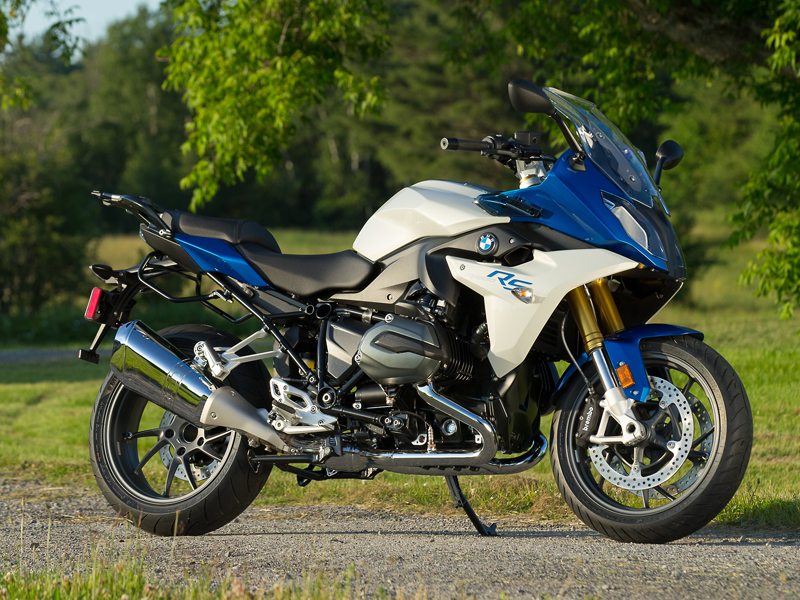
BMW hosted a double-header press launch for the R 1200 RS and S 1000 XR (read our S 1000 XR first-ride review) in the Muskoka Lakes region of Ontario, Canada. Our test ride on the RS began on a chilly, drizzly Sunday morning with steel-wool clouds hanging low in the sky. I had on waterproof gear and boots but it was only a matter of time before my leather gloves became soaked. With the Keyless Ride fob in my pocket, the RS started with the push of a button. I raised the windscreen, turned on the heated grips and toggled the Riding Mode button to Rain.
The base model ($14,950) comes with ABS, ASC (Anti Spin Control), two riding modes (Road and Rain), which alter throttle response and the ASC setting (dry vs. wet), and a non-adjustable fork and a rear shock that’s manually adjustable for preload and rebound. Our test bikes were equipped with the Premium Package ($17,770), which adds Keyless Ride, Gear Shift Assistant Pro (allows up- and downshifts without using the clutch or rolling off the throttle), the Comfort Package (chrome exhaust, heated grips and tire pressure monitor) and the Touring Package (Dynamic Electronic Suspension Adjustment, On Board Computer Pro, GPS preparation, cruise control, centerstand, luggage rack and saddlebag mounts), as well as the Ride Modes Pro option ($350), which adds Dynamic and (customizable) User modes and Dynamic Traction Control. Saddlebags with one-key lock barrels cost about $1,000, and BMW’s Navigator V GPS, which can be operated via the Multi-Controller on the left grip, is another $799.
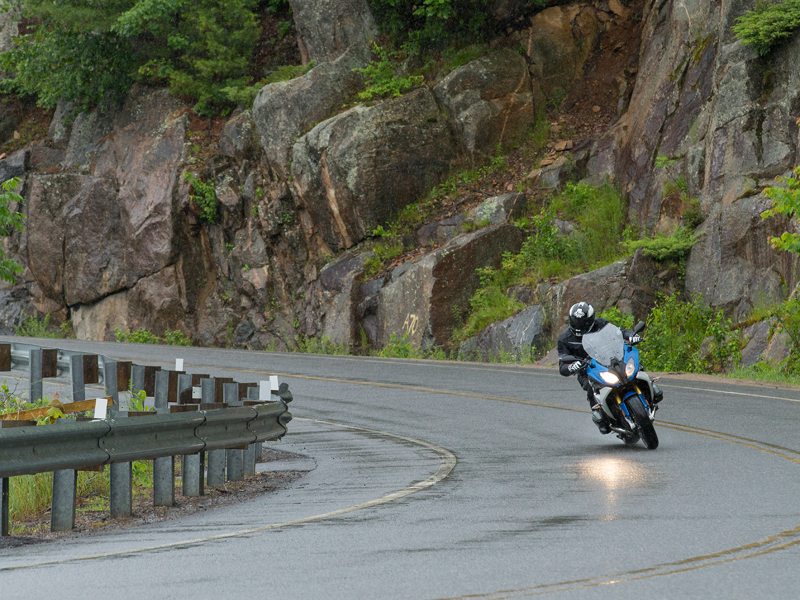
Having put thousands of miles on the R 1200 GS/GSA/RT/R water boxers, I felt right at home on the RS, from the diameter of the grips and the layout of the controls to the crispness of the throttle response. Even in Rain mode, full power and torque are available (125 horsepower and 92 lb-ft at the crank, claimed; 107 horsepower and 78 lb-ft at the rear wheel for the 2015 R 1200 R we recently put on Jett Tuning’s dyno), they’re just doled out more gradually. Somewhat less snap to the throttle, coupled with lean-angle-sensitive Dynamic Traction Control and grippy Metzeler Roadtec Z8 Interact sport-touring tires (120/70-ZR17 front, 180/55-ZR17 rear), meant that the RS clung tenaciously to Muskoka’s wet, convoluted roads. And, as with other R-series models, the boxer twin’s low center of gravity gave the RS light, neutral handling. Although the engine felt buzzy at times, the overall package felt nicely refined and gave me total confidence even in pouring rain.
A key advantage of BMW’s Telelever front suspension (which is still found on the R 1200 GS, GSA and RT) is the lack of front-end dive under braking. Although the telescopic fork on the R 1200 RS compresses when hard on the binders, the effect is lessened by Dynamic ESA, which electronically adjusts damping in milliseconds using an array of sensors. D-ESA offers three selectable preload levels and two damping settings (Road and Dynamic). With 5.5 inches of travel front and rear, it delivers always-just-right compliance—firm when you need it and plush when you don’t while keeping the chassis very stable, minimizing nose dive and rear squat. Add in a pair of strong, precise radial-mount, 4-piston Brembo front calipers and a tubular-steel bridge frame that uses the engine as a stressed member, and the end result is a chassis that can handle whatever mix of sport and touring you prefer.
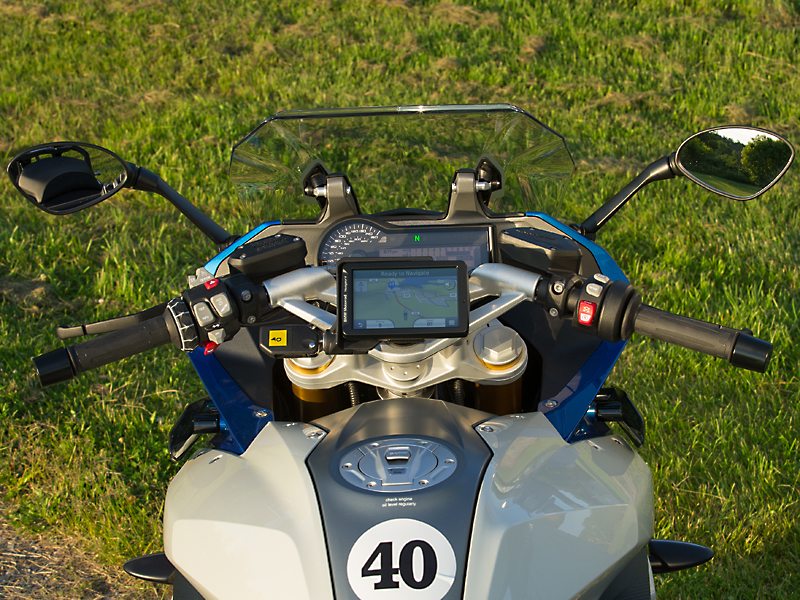
Though I coveted the massive electric windscreen and heated seat on the R 1200 RT that tagged along with our group, the R 1200 RS held its own in terms of weather protection and comfort. The fairing and windscreen parted the air smoothly, but my hands, arms and legs were partly exposed. BMW makes some of the best stock seats in the business, and the one on the RS is no exception, providing good support. The 32.3-inch seat afforded plenty of room for my long legs, and other seat options are available (29.9-33.1 inches). My only niggling complaint is forward position of the handlebar, which put some bend in my back that became tiresome toward the end of our long, soggy day.
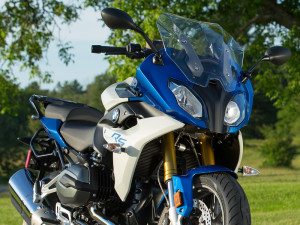
The rain intensified after lunch and several riders took a shortcut back to the hotel. Just as a bad day of fishing beats a good day at the office, riding in the rain beats sitting in front of my laptop. We soldiered on. Except for my hands I was dry, and the R 1200 RS never gave the impression that it would rather not be splashing through puddles. Although the Gear Shift Assistant Pro was abrupt in lower gears, it shifted between 3rd and 6th gears effortlessly, and when I did use the slip-and-assist clutch its action was light. Using all of the controls was intuitive and the analog speedometer and info-packed LCD (which has three display modes: full, sport and tour) were easy to read, even through a wet, fogged-up face shield.
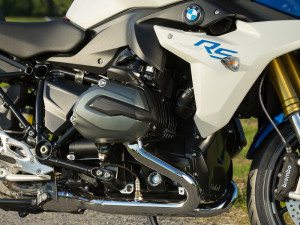
BMW has one or more models for just about every type of touring: the K 1600 GTL for luxury touring; the K 1600 GT, R 1200 RT and F 800 GT for sport touring; the R 1200 GS/GSA for adventure touring; and the S 1000 XR for “adventure sport” touring. Where does the R 1200 RS fit in? Among the sport tourers, between the heavier, more expensive K 1600 GT and R 1200 RT and the lighter, less expensive F 800 GT. It offers the distinctive, torquey boxer twin experience in a sporty, fairing-equipped package. Welcome back, RS. I look forward to our next encounter, rain or shine.
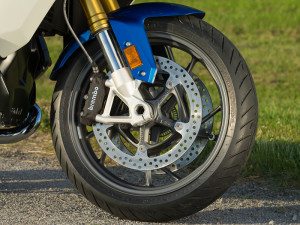
2016 BMW R 1200 RS Specifications
Base Price: $14,950
Price as Tested: $18,120 (Premium Package, Ride Modes Pro)
Website: bmwmotorcycles.com
Engine Type: Liquid-cooled, longitudinal flat opposed twin, DOHC, 4 valves per cyl.
Displacement: 1,170cc
Bore x Stroke: 101.0 x 73.0mm
Transmission: 6-speed, hydraulically actuated wet clutch
Final Drive: Shaft, 2.818:1
Wheelbase: 60.2 in.
Rake/Trail: 27.7 degrees/4.8 in.
Seat Height: 32.3 in.
Claimed Wet Weight: 519 lbs.
Fuel Capacity: 4.7 gals.
MPG: NA







